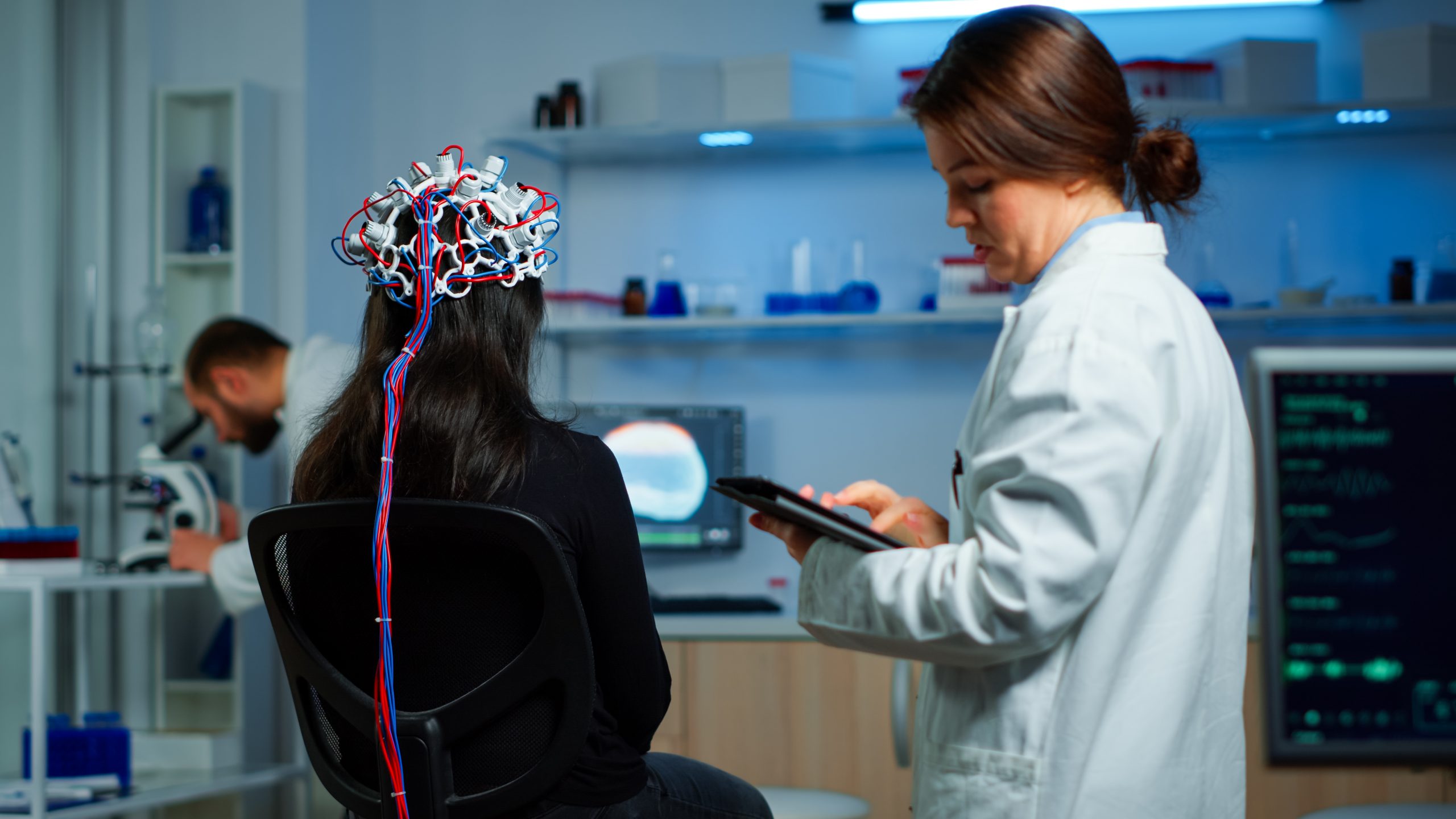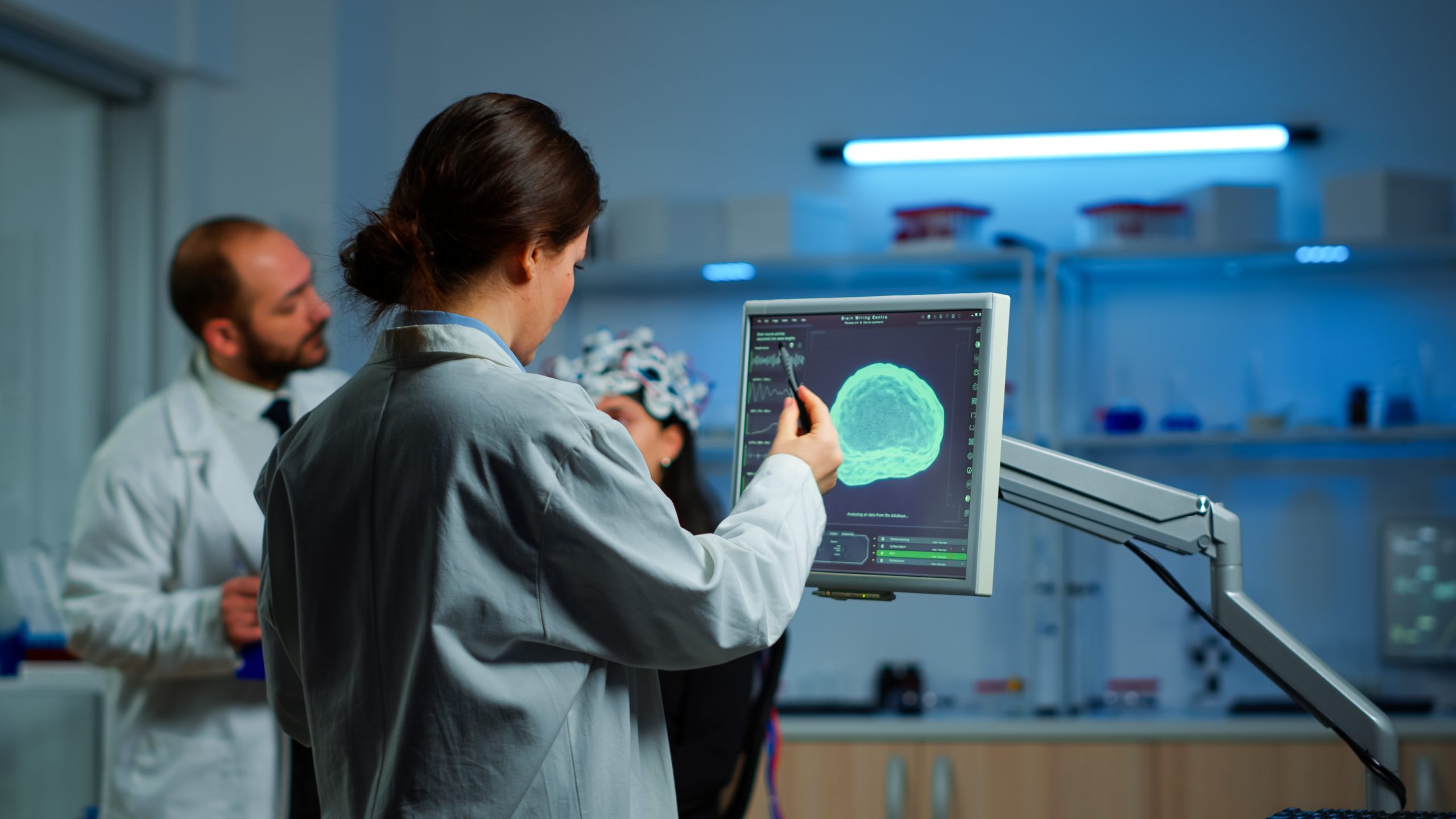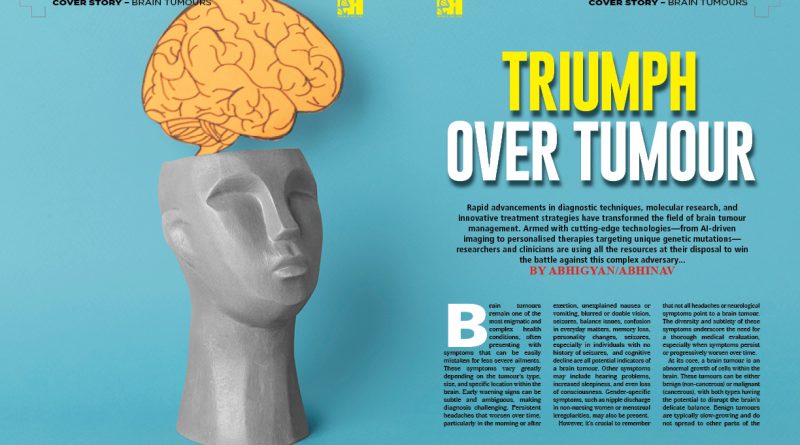Triumph Over Tumour
Rapid advancements in diagnostic techniques, molecular research, and innovative treatment strategies have transformed the field of brain tumour management. Armed with cutting-edge technologies—from AI-driven imaging to personalised therapies targeting unique genetic mutations—researchers and clinicians are using all the resources at their disposal to win the battle against this complex adversary…
By Abhigyan/Abhinav
Brain tumours remain one of the most enigmatic and complex health conditions, often presenting with symptoms that can be easily mistaken for less severe ailments. These symptoms vary greatly depending on the tumour’s type, size, and specific location within the brain. Early warning signs can be subtle and ambiguous, making diagnosis challenging. Persistent headaches that worsen over time, particularly in the morning or after exertion, unexplained nausea or vomiting, blurred or double vision, seizures, balance issues, confusion in everyday matters, memory loss, personality changes, seizures, especially in individuals with no history of seizures, and cognitive decline are all potential indicators of a brain tumour. Other symptoms may include hearing problems, increased sleepiness, and even loss of consciousness. Gender-specific symptoms, such as nipple discharge in non-nursing women or menstrual irregularities, may also be present.

However, it’s crucial to remember that not all headaches or neurological symptoms point to a brain tumour. The diversity and subtlety of these symptoms underscore the need for a thorough medical evaluation, especially when symptoms persist or progressively worsen over time.
At its core, a brain tumour is an abnormal growth of cells within the brain. These tumours can be either benign (non-cancerous) or malignant (cancerous), with both types having the potential to disrupt the brain’s delicate balance. Benign tumours are typically slow-growing and do not spread to other parts of the brain, but their presence can still be life-threatening, depending on their location and size. Malignant tumours, on the other hand, are aggressive, invasive, and capable of spreading to other regions, often resulting in severe neurological damage. The exact causes of brain tumours remain elusive, though recent studies have shed light on potential genetic, environmental, and lifestyle factors that may contribute to their development.
Brain tumours represent a significant public health concern in India, with approximately 30,000 new cases diagnosed each year. Recent epidemiological studies indicate a rising trend in both the incidence and prevalence of brain tumours across the country. While brain tumours can occur at any age, recent data suggests an alarming increase in cases among younger adults, aged 25 to 45, with a particular rise in malignant gliomas. This trend is attributed to factors such as lifestyle changes, increased exposure to environmental carcinogens, and better diagnostic capabilities.
Breakthroughs in Diagnosis of Brain Tumours
Recent research has identified numerous genetic mutations associated with brain tumours, offering hope for more targeted and effective therapies. The discovery of the IDH1 and IDH2 gene mutations in gliomas, for instance, has revolutionised our understanding of tumour development. These mutations have been linked to improved survival rates and serve as potential targets for new therapies. The identification of genetic markers such as MGMT promoter methylation and 1p/19q co-deletion has also helped refine treatment protocols, allowing for more personalised treatment strategies.
The classification of brain tumours into primary and secondary categories is crucial for determining the appropriate treatment strategy. Primary brain tumours originate within the brain and can either be benign or malignant. The most common types include gliomas, which account for about 30 per cent of all brain tumours and 80 per cent of all malignant tumours. Glioblastoma multiforme (GBM), the most aggressive form of glioma, has recently been the subject of groundbreaking research, with the introduction of treatments such as tumour-treating fields (TTFs) – an innovative, non-invasive therapy that uses electric fields to disrupt cancer cell division.

Secondary or metastatic brain tumours originate from cancers elsewhere in the body, such as the lungs, breasts, kidneys, or colon, and spread to the brain. Recent studies indicate that metastatic brain tumours are more prevalent than primary ones, especially in individuals with a history of systemic cancer. The management of metastatic brain tumours has evolved significantly, with advancements in targeted therapies, immunotherapies, and stereotactic radiosurgery offering hope for improved survival and quality of life.
The field of brain tumour diagnostics has seen remarkable progress, with cutting-edge imaging techniques offering unparalleled insights into tumour characteristics. Magnetic Resonance Imaging (MRI) remains the gold standard for brain tumour diagnosis, but advanced techniques such as MR spectroscopy and functional MRI (fMRI) are now being utilised to provide detailed information on tumour metabolism and brain activity. Positron Emission Tomography (PET) scans, combined with MRI, offer a more accurate assessment of tumour aggressiveness and response to therapy.
Artificial Intelligence (AI) and machine learning have emerged as game-changers in brain tumour diagnosis, with AI algorithms capable of analysing imaging data to distinguish between tumour types, predict tumour growth, and assess treatment response with remarkable accuracy. Recent studies have shown that AI-based diagnostic tools can achieve up to 94 per cent accuracy in identifying brain tumours, outperforming traditional radiological assessments.
One of the most promising advancements in brain tumour diagnostics is the development of liquid biopsy techniques. This minimally invasive method involves analysing a patient’s blood, cerebrospinal fluid, or other bodily fluids to detect tumour-specific genetic mutations, proteins, and circulating tumour DNA (ctDNA). Liquid biopsies have shown great potential in monitoring treatment response, detecting tumour recurrence, and identifying genetic mutations that may guide targeted therapy. Although still in the experimental stage, liquid biopsies are poised to revolutionise the early detection and monitoring of brain tumours, reducing the need for invasive surgical biopsies.

Advances in Treatment and Management
The treatment of brain tumours has evolved significantly, thanks to recent breakthroughs in medical technology, genetics, and molecular biology. Surgical resection remains the cornerstone of brain tumour management, but new techniques have made it safer and more effective. For example, intraoperative MRI, 5-aminolevulinic acid (5-ALA)-guided resection, and fluorescence-guided surgery have enhanced the precision of tumour removal, minimising damage to healthy brain tissue.
Radiation therapy has also seen advancements with the introduction of proton beam therapy, a highly targeted form of treatment that minimises radiation exposure to surrounding healthy tissue. This has proven particularly beneficial for paediatric brain tumour patients, reducing the risk of long-term cognitive impairment. Stereotactic radiosurgery (SRS) techniques, such as Gamma Knife and CyberKnife, offer non-invasive options for treating tumours in difficult-to-reach areas, with minimal recovery time.
Chemotherapy remains a standard treatment option, but the advent of targeted therapies has transformed the landscape of brain tumour management. Drugs like Temozolomide, which can cross the blood-brain barrier, have improved survival rates for glioblastoma patients. Targeted therapies, such as Bevacizumab (an anti-angiogenic agent that inhibits the growth of blood vessels feeding the tumour) and EGFR inhibitors, offer new hope for patients with specific genetic mutations.
Immunotherapy has emerged as a revolutionary treatment option for brain tumours, harnessing the body’s immune system to recognise and attack cancer cells. Checkpoint inhibitors, such as Pembrolizumab and Nivolumab, have shown promising results in clinical trials, particularly for high-grade gliomas. Chimeric Antigen Receptor (CAR) T-cell therapy, which involves modifying a patient’s T-cells to target tumour-specific antigens, has demonstrated success in treating recurrent glioblastoma, although it is still in the experimental stages.

Another cutting-edge treatment, Tumour Treating Fields (TTFs), involves the application of low-intensity, alternating electric fields to disrupt cancer cell division. Approved by the FDA for treating glioblastoma, TTFs have been shown to improve survival rates when combined with standard treatments like Temozolomide. This non-invasive therapy is delivered through adhesive patches placed on the scalp, offering a novel approach that targets tumour cells while sparing healthy tissue.
The shift towards personalised medicine is one of the most exciting developments in brain tumour treatment. Advances in genomic sequencing have made it possible to identify specific mutations within a tumour, allowing for customised treatment plans tailored to an individual’s genetic profile. This approach not only improves treatment efficacy but also minimises side effects. Clinical trials exploring the use of personalised vaccines, which stimulate the immune system to target tumour-specific antigens, have shown encouraging results, with some patients achieving long-term remission.
The aftermath of brain tumour treatment can be physically and emotionally challenging, necessitating a holistic approach to rehabilitation. Physical therapy, occupational therapy, and speech therapy play a crucial role in helping patients regain lost skills and independence. Cognitive rehabilitation is particularly important for addressing memory, attention, and problem-solving difficulties that may result from the tumour or its treatment. Psychological support, including counselling and support groups, is essential for patients and their families to navigate the emotional impact of a brain tumour diagnosis and treatment journey.

Looking Ahead: Hope on the Horizon
Research into brain tumours continues to accelerate, with scientists exploring innovative treatment modalities, such as gene therapy, oncolytic virus therapy (which uses modified viruses to attack cancer cells), and nanotechnology-based drug delivery systems. These emerging therapies hold the promise of more effective and less invasive treatment options in the future.
Brain tumours are complex, and treatments are continuously improving with advancements in medical technology, such as neuronavigation systems that aid in more precise surgery. Addressing brain tumours requires a multidisciplinary approach that includes timely diagnosis, appropriate treatment, and comprehensive rehabilitation for the best outcomes. Thus, brain tumours remain a formidable health challenge, but the advances in research, diagnostics, and treatment offer renewed hope. The integration of cutting-edge technologies, personalised medicine, and a comprehensive, multidisciplinary approach to care is reshaping the landscape of brain tumour treatment, bringing us closer to a future where this silent threat can be detected early, treated effectively, and, ultimately, conquered.

